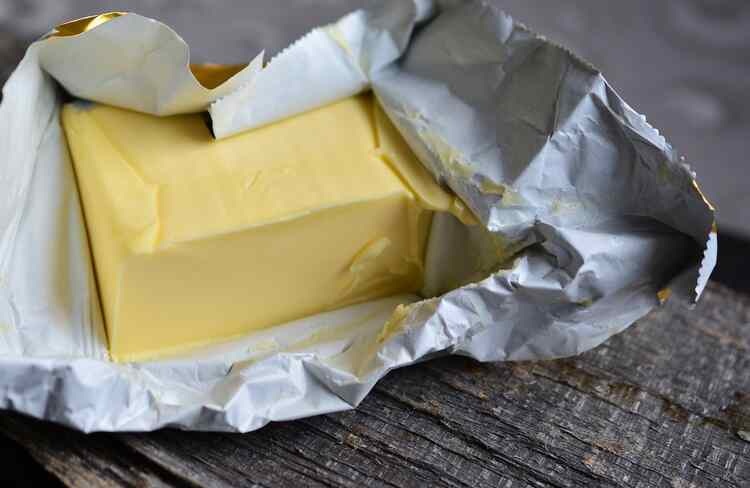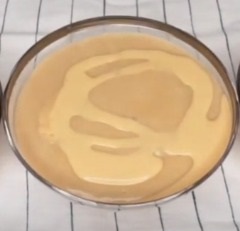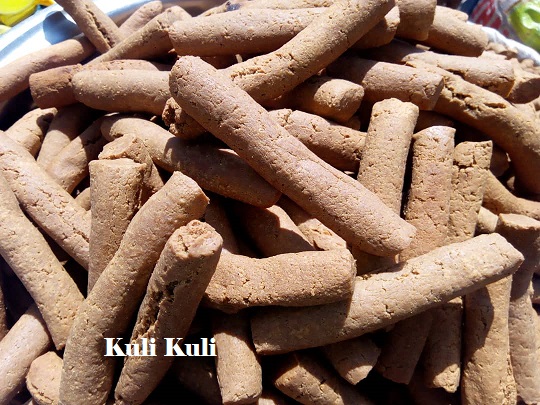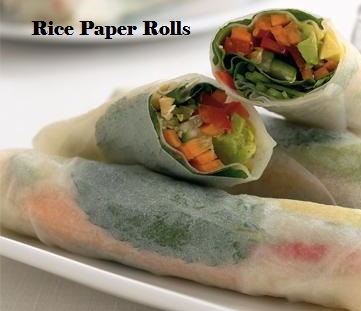
Best Butter Substitute – Easy Butter Alternatives For Cooking
Butter is versatile in the kitchen and is often used for sautéing, frying, baking, and as a base for sauces and gravies. It’s also commonly used as a topping for pancakes, waffles, and other breakfast items, as well as a flavor enhancer in many dishes.
Butter can be made from the milk of various animals, with cow’s milk being the most common source. However, butter can also be made from the milk of other animals like goats, sheep, and buffalo. The process of making butter involves separating the fat from the milk or cream through churning, either by hand or using machines. This process agitates the fat molecules, causing them to clump together and form butter.
Reasons Why You May Need To Replace Butter
There are lots of reasons why butter might need to be substituted for other spread.
Health Reasons
The high saturated fat content in Butter makes people to avoid it. Although the evidence is conflicting, a high diet of saturated fat has been associated with an elevated risk of heart disease.
Additionally, butter has a lot of calories because it is high in fat. Butter consumption may need to be decreased if you wish to lose weight.
Milk Allergy
Despite having relatively little protein, butter still has reasonable amounts of milk proteins, which can cause allergies.
It’s crucial to watch your intake of butter if you have a milk allergy. If your allergy is severe, you might need to stay away from it entirely.
Lactose Intolerance
People with lactose sensitivity typically tolerate the trace levels of lactose in butter without experiencing any negative side effects.
However, some people are more lactose intolerant than others and may need to avoid butter as a result.
- Individuals have chosen a certain diet, like becoming vegans.
- Its high concentration of saturated fat
What Is Butter?
Butter is a dairy product that is made from churning cream or milk to separate the fat from the liquid.
It is a common ingredient used in cooking, baking, and as a spread on bread and other foods.
Butter is a staple ingredient in many culinary traditions around the world and is valued for its flavor, texture, and versatility in cooking and baking.
It is composed mainly of butterfat, water, and milk proteins. It has a rich, creamy texture and a distinctive flavor that can vary depending on factors like the animal’s diet and the processing methods used.
Different Types of Butter
There are different types of butter available, including salted and unsalted varieties.
- Salted – Salted butter has salt added to it, which can enhance the flavor and act as a preservative.
- Unsalted – Unsalted butter is preferred in baking because it allows for better control over the amount of salt in a recipe.
What Is The Difference Between Butter And Other Fats?
Heavy cream is used to make butter. It has greater quantities of saturated fat, which pose a number of dangers to health . Oils from plants are used to make margarine. It has unsaturated fats, or “good” fats, which the body uses.
The primary distinction between the two is that butter is generated from dairy and contains a high amount of saturated fats, whereas margarine is produced from plant oils.
Butter has a fat content of about 80%; the remaining portion is made up of water and milk solids. Dairy is traces in most margarines too.
What Are The Best Substitutes For Butter
Butter Substitute – Margarine
Margarine or plant-based spreads made from oils, It can be used as a direct replacement for butter. Most baking and culinary recipes allow for the substitution of margarine for butter. Since it comes in sticks and tubs and is also non-dairy, it is simple to measure and incorporate into recipes.
Follow these easy procedures and use a 1:1 ratio to replace butter with margarine. Make sure to choose spreads with no trans fats and minimal saturated fats.
Butter Substitute – Olive Oil
In some recipes, you can substitute butter with a neutral-flavored oil like vegetable oil, canola oil, or grapeseed oil. This is especially common in recipes where butter is melted and used for moisture.
Vegetable oil is also utilized as the main fat in baked goods, just like butter. As a result, it is among the best and simplest alternatives to butter (in baking and cooking).
Even though oil gives the recipe a similar amount of fat, it lacks butter’s water content. As a result, baked items made using oil will be slightly heavier than those made with butter.
Butter Substitute – Ghee
Ghee is a variety of clarified butter with a nutty taste. It is a safer option for those who have a milk allergy or lactose intolerance because it contains very little casein or lactose.
Butter Substitute – Coconut oil
Coconut oil can be used in baking as a 1:1 substitute for butter, though it might alter the flavor depending on the variety.
Basically, unrefined coconut oil tends to taste more like actual coconut. For dishes that call for flavors of the tropics or dark chocolate, it works beautifully.
You can use a more refined kind of coconut oil or other ingredient if the flavor of coconut is not what you’re after.
Substitute for Butter – Mayonnaise
Since mayo is really just oil and egg yolks mixed together, it is ideal for imparting moisture and richness to foods like mashed potatoes or garlic bread. Mayonnaise is a good alternative for spread
Substitute for Butter – Avocado
Mashed avocado can replace butter in certain recipes, such as in baking or as a spread. It adds a creamy texture and healthy fats.
In comparison to other fruits, avocados also have a more mild flavor profile. It will pick up the flavors of everything around it..
Butter and avocado can be substituted one cup for the other in an exact 1:1 ratio.
Substitute for Butter – Nut Butters
Nut butters like peanut butter or almond butter can work well as a replacement in recipes that can handle the flavor and texture change.
Substitute for Butter – Yogurt
For this baking substitution, stick to full-fat yogurts because the richer flavor will significantly improve the baked items. You should generally maintain a 1:1 ratio: Greek yogurt might be a better option when baking recipes call for bigger amounts of butter because it has less moisture in it.
Substitute for Butter – Applesauce
In search of a healthy replacement for butter? Applesauce is an excellent substitute for butter if you’re trying to cut back. All sorts of muffins and breads can be made with unsweetened applesauce, although the final product may be slightly denser.
Also Read >>>>> Easy Applesauce Recipe – How To Make Applesauce
Substitute for Butter – Mashed Bananas
The same manner that applesauce functions, mashed bananas also do. You can use prunes or other fruits in addition to bananas.
The best bananas are those that are already turning brown and are overripe, but you can use whatever banana you have on hand. Similar to applesauce, this works best for cookies and quick breads because it results in a denser baked meal.
Substitute for Butter – Mashed Pumpkin
The same principle applies to mashed fruit as it does to starchy vegetables like sweet potato and pumpkin. They both contribute to binding the elements in a similar way to butter. With a denser baked item, they will likewise respond in the same manner.
Substitute for Butter – Vegan Butters
There are vegan butter substitutes available in stores that are specifically designed to replicate the taste and texture of butter.
Substitute for Butter – Silken Tofu
Silken tofu can be blended into a smooth consistency and used in recipes where butter provides moisture, such as in certain baked goods.
Substitute for Butter – Vegetable Shortening
In situations where butter contributes flavor (buttercream frosting). This is a simple 1:1 substitute for butter. Since shortening has a greater melting point than butter, baked items made with it will be lighter and fluffier than those made with butter.
Substitute for Butter – Sour Cream
Sour cream can also be substituted for butter in some recipes to enhance moisture and tanginess. Use full-fat sour cream for the richest soups, stews, and sauces
When substituting butter, it’s important to consider the intended purpose of the butter in the recipe. Some alternatives might work better in certain applications than others. Additionally, keep in mind that the flavor, texture, and overall outcome of the dish might vary when using substitutes. It’s a good idea to experiment and adjust recipes to your preferences.
How to Make Butter
Making butter at home is a simple process that involves churning cream to separate the fat from the liquid. Here’s a basic guide to making butter:
Ingredients
- Heavy cream (preferably cold)
Equipment:
- Mixer or blender (optional)
- Jar with a tight-fitting lid
- Fine-mesh strainer (optional)
- Cold water
Instructions on How to Make Butter
- Pour heavy cream into a food processor or blender.
- Process on high speed until butter separates for about 10 minutes.
- Strain off liquid, thereafter press butter into a small bowl using the back of a spoon this will further remove liquid.
- Season with salt; (You can also add a pinch of salt to the cream before churning if you prefer salted butter).
- Once you’re satisfied with the butter’s cleanliness, you can shape it into a block, log, or any desired form.
- Wrap the butter in wax paper or plastic wrap to prevent it from picking up odors in the refrigerator.
- Store the butter in the refrigerator or freezer. It can last for several weeks in the fridge and a few months in the freezer.
Note: Homemade butter might have a slightly different texture and flavor compared to store-bought butter due to variations in cream quality and churning methods
Keep in mind that while this is a basic method, there are various techniques you can experiment with to refine the process and achieve the texture and flavor you desire.
Best Substitutes For Butter As A Spread – Butter Alternatives
Spreading butter over bread, crackers, and other foods is a common practice.
You can continue to enjoy spreads on your foods if you stop eating butter.
The following foods are pleasant and wholesome in addition to having consistency that is perfect for spreads:
Extra virgin olive oil – For a zesty spread, mix some olive oil, basil, and pepper.
Peanut butter – Spreading peanut and almond butter on crackers or toast is simple.
Cheese – If you can eat dairy, try ricotta, cottage cheese, or cream cheese.
Avocado – Toast spread a spoonful or two of ripe avocado on top.
Hummus – is excellent for dipping and spreading.
Nutrition Facts of Butter
The nutritional content of butter can vary slightly based on factors such as the source of the milk, the processing methods, and whether it’s salted or unsalted. Below are approximate values for a standard serving size of 1 tablespoon (about 14 grams) of unsalted butter:
- Calories: Around 102 calories
- Total Fat: Approximately 12 grams
- Saturated Fat: Around 7 grams
- Trans Fat: Typically present in very small amounts naturally or from processing
- Cholesterol: About 31 milligrams
- Sodium: Varies depending on whether it’s salted or unsalted; generally low
- Total Carbohydrates: Negligible amount (less than 1 gram)
- Protein: Negligible amount (less than 1 gram)
- Vitamin A: About 11% of the Daily Value (DV)
- Vitamin E: About 2% of the DV
- Vitamin D: About 1% of the DV
- Vitamin K: About 1% of the DV
It’s important to note that butter is primarily composed of fat, particularly saturated fat, which is why it’s advisable to consume it in moderation. The nutritional profile of butter makes it calorie-dense, so using it sparingly or choosing alternatives with healthier fats might be a consideration for some individuals, especially if they’re concerned about heart health.
Health concerns
There are several reasons why you might need to replace butter in your cooking or baking:
Dietary Restrictions: If you have dietary restrictions, such as being lactose intolerant or following a vegan diet, you might need to replace butter with alternatives that suit your needs.
Health Concerns: Butter is high in saturated fats, which can contribute to heart disease and other health issues when consumed in excess. If you’re trying to reduce your saturated fat intake, you might opt for healthier alternatives.
Flavor Profile: Some recipes may call for butter as a main flavor component, but you might want to experiment with different flavors by using alternative ingredients.
Allergies: Dairy allergies are common, and butter is a dairy product. If you or someone you’re cooking for has a dairy allergy, you’ll need to find a suitable replacement.
Baking Substitutes: In baking, butter provides moisture, flavor, and structure. However, you might need to replace it due to dietary restrictions or if you’re seeking different textures in your baked goods.
Health Benefits of Butter – Surprising Butter Benefits
Butter, like many foods, has both potential benefits and considerations when it comes to health. Here are some potential health benefits of butter:
Source of Fat -Soluble Vitamins
Butter is a good source of fat-soluble vitamins such as vitamin A, which is important for vision, immune function, and skin health. It also contains small amounts of vitamins E and K.
Satiety and Flavor
The rich flavor and creamy texture of butter can enhance the taste and satisfaction of meals, helping you feel full and potentially preventing overeating.
Conjugated Linoleic Acid (CLA)
Grass-fed butter may contain higher levels of conjugated linoleic acid (CLA), a type of fatty acid that some studies suggest could have potential health benefits, including anti-inflammatory and anti-cancer properties.
Healthy Fats for Cooking
Butter contains both saturated and unsaturated fats. While saturated fats have been associated with health concerns, using butter in moderation for cooking can provide a stable fat source that adds flavor to dishes.
Brain Health
Some research suggests that fats like those found in butter are important for brain health and cognitive function.
Skin Health
The fats in butter, particularly when consumed in a balanced diet, can contribute to healthy skin by providing essential fatty acids.
Nutrient Absorption
The fat in butter can aid in the absorption of fat-soluble vitamins and other nutrients from foods.
Culinary Uses
Butter is a versatile ingredient in cooking and baking, allowing for a wide range of culinary creations.
It’s important to note that while butter does have these potential benefits, it is also high in saturated fats, which are associated with increased levels of LDL cholesterol (“bad” cholesterol) and potential cardiovascular risks. As such, it’s generally recommended to consume butter in moderation and as part of a balanced diet.
Side Effect of Butter
While butter does have potential health benefits, it’s important to be aware of certain side effects and considerations associated with its consumption, particularly when consumed in excess. Here are some potential side effects of consuming butter:
High in Saturated Fat
Butter is primarily composed of saturated fat, which, when consumed in excessive amounts, can raise levels of LDL cholesterol (“bad” cholesterol) in the blood and increase the risk of cardiovascular diseases like heart disease.
Calorie-Dense
Butter is calorie-dense, meaning it provides a significant amount of calories in a small serving. Consuming too many calories without balancing them with physical activity can lead to weight gain.
Potential for Unhealthy Eating Patterns
Foods high in fat and calories, like butter, can contribute to overconsumption and unhealthy eating patterns if not consumed mindfully and in moderation.
Impact on Blood Lipids
Excessive consumption of butter and other sources of saturated fats can contribute to unfavorable changes in blood lipid levels, including increased levels of LDL cholesterol and reduced levels of HDL cholesterol (“good” cholesterol).
Cardiovascular Health
Due to its saturated fat content, excessive butter consumption can contribute to a higher risk of cardiovascular diseases, including heart attack and stroke.
Lactose and Dairy Allergies
Butter is a dairy product, so individuals with lactose intolerance or dairy allergies may experience digestive discomfort or allergic reactions if they consume butter.
Affects Weight Management
The high calorie content of butter can contribute to weight gain if not accounted for within an overall balanced diet.
Salt Content (Salted Butter)
Salted butter contains added salt, which can contribute to increased sodium intake if consumed in excess, potentially affecting blood pressure and cardiovascular health.
In many cases, substituting some or all of the butter with healthier fats and alternatives can be a more health-conscious choice.
It’s important to emphasize moderation when incorporating butter into your diet. If you have specific health concerns, such as heart disease, high cholesterol, or weight management, it’s advisable to consult with a healthcare professional or registered dietitian for personalized guidance on how much butter is appropriate for your individual circumstances.


